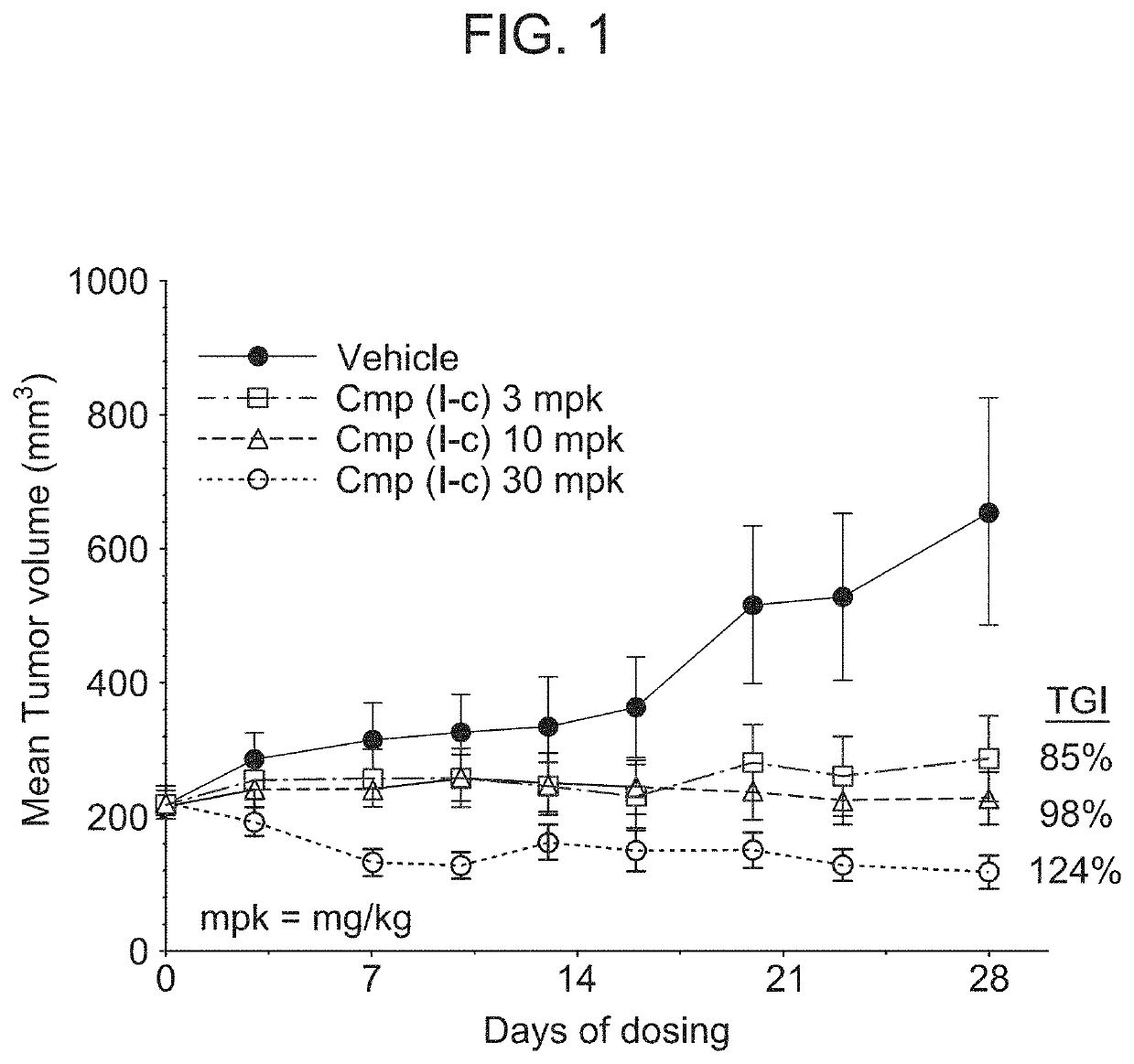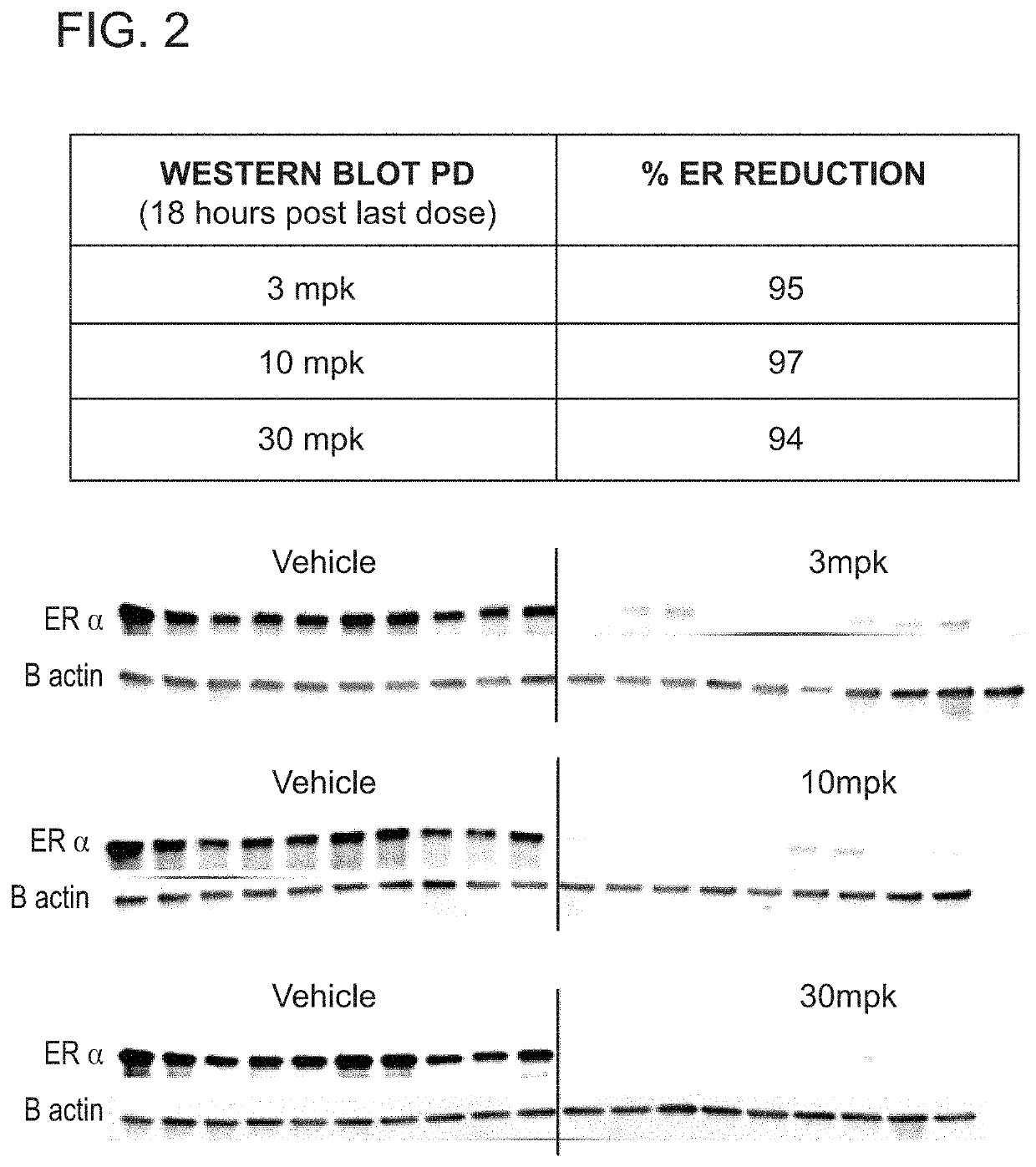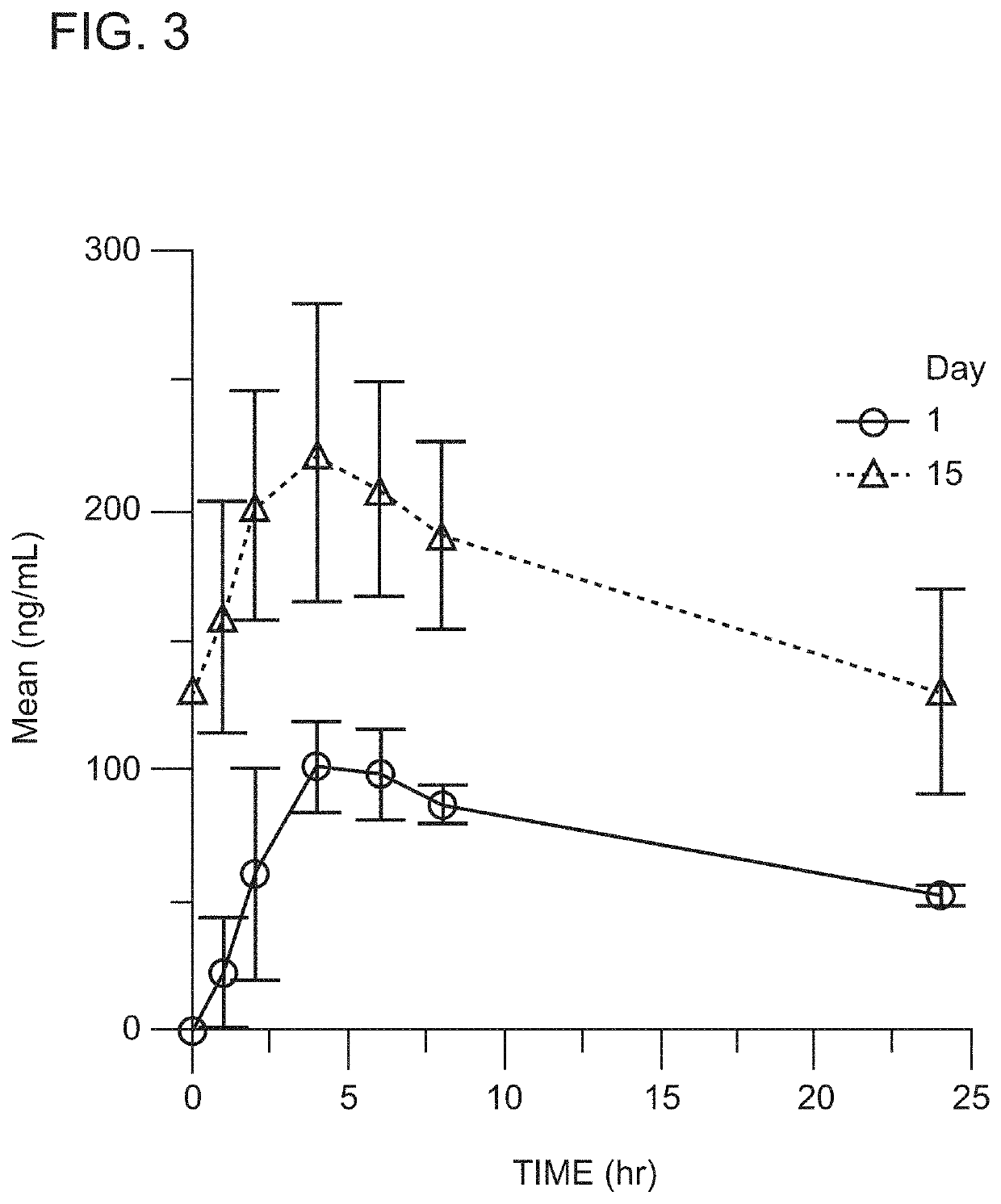Methods of treating breast cancer with tetrahydronaphthalene derivatives as estrogen receptor degraders
a technology of estrogen receptor and tetrahydronaphthalene, which is applied in the field of breast cancer treatment, can solve problems such as destabilization of er
- Summary
- Abstract
- Description
- Claims
- Application Information
AI Technical Summary
Benefits of technology
Problems solved by technology
Method used
Image
Examples
example 1
(I-c)—ER Degrader for Subjects with Locally Advanced or Metastatic Breast Cancer
[0321]Breast cancer is the second most common cancer in women. About 268,000 women are expected to be diagnosed with invasive breast cancer in the US in 2019. (American Cancer Society.) Metastatic breast cancer accounts for ˜6% of newly diagnosed cases. (Malmgren, J. A., Breast Cancer Res Treat (2018) 167:579-590.) 80% of newly diagnosed breast cancers are estrogen receptor (ER) positive. (National Cancer Institute, Hormone Therapy for Breast Cancer.)
[0322]Fulvestrant has validated the relevance of ER degradation in breast cancer.
[0323]After 6 months of fulvestrant treatment, up to 50% of ER baseline levels remain (Gutteridge et al., Breast Cancer Res Treat 2004; 88 suppl 1:S177).
[0324]Compound (I-c) is a potent degrader (DC50=1.8 nM) of the estrogen receptor, which is in development for the treatment of patients with ER+locally advanced or metastatic breast cancer.
example 2
al Efficacious Exposure Range for Compound (I-c)
[0325]In preclinical animal studies, administration of Compound (I-c) was performed at doses of 3 mg / kg, 10 mg / kg, and 30 mg / kg (oral, once daily). The pharmacokinetic results are shown below in Table 1. At doses of 3 mg / kg, 10 mg / kg, and 30 mg / kg of Compound (I-c), tumor growth inhibition (TGI) of 85%, 98%, and 124%, respectively, was observed compared to a control group in a MCF7 xenograft model.
[0326]FIG. 1 shows the results of the tumor growth inhibition experiments at the tested doses (mean tumor volume (mm3) vs. time).
[0327]FIG. 2 shows the reduction of ER in MCF7 xenograft tumors in response to dosing of Compound (I-c) of 3 mg / kg, 10 mg / kg, and 30 mg / kg (oral, once daily).
TABLE 1DoseMean AUC0-24Mean Cmax(oral, once daily)(ng*hr / mL)(ng / mL) 3 mg / kg6588410 mg / kg253831230 mg / kga5717962asingle dose
Values represent total drug concentrations
example 3
y Studies
[0328]Animals were orally administered Compound (I-c) once daily for 28 days, followed by a 28-day recovery period for high dose-animals. In dogs, once daily, oral doses of 15 mg / kg, 45 mg / kg, or 90 mg / kg of Compound (I-c) were administered. In rats, once daily, oral doses of 3 mg / kg, 10 mg / kg, 30 mg / kg, or 100 mg / kg of Compound (I-c) were administered. These studies have shown no clinical signs of toxicity following oral, once daily doses of Compound (I-c) in doses up to 100 mg / kg / day in rats and 90 mg / kg / day in dogs. Additionally, no effects on the overall animal health or well-being of the animals were observed.
PUM
| Property | Measurement | Unit |
|---|---|---|
| size | aaaaa | aaaaa |
| weight | aaaaa | aaaaa |
| weight | aaaaa | aaaaa |
Abstract
Description
Claims
Application Information
 Login to View More
Login to View More - R&D
- Intellectual Property
- Life Sciences
- Materials
- Tech Scout
- Unparalleled Data Quality
- Higher Quality Content
- 60% Fewer Hallucinations
Browse by: Latest US Patents, China's latest patents, Technical Efficacy Thesaurus, Application Domain, Technology Topic, Popular Technical Reports.
© 2025 PatSnap. All rights reserved.Legal|Privacy policy|Modern Slavery Act Transparency Statement|Sitemap|About US| Contact US: help@patsnap.com



